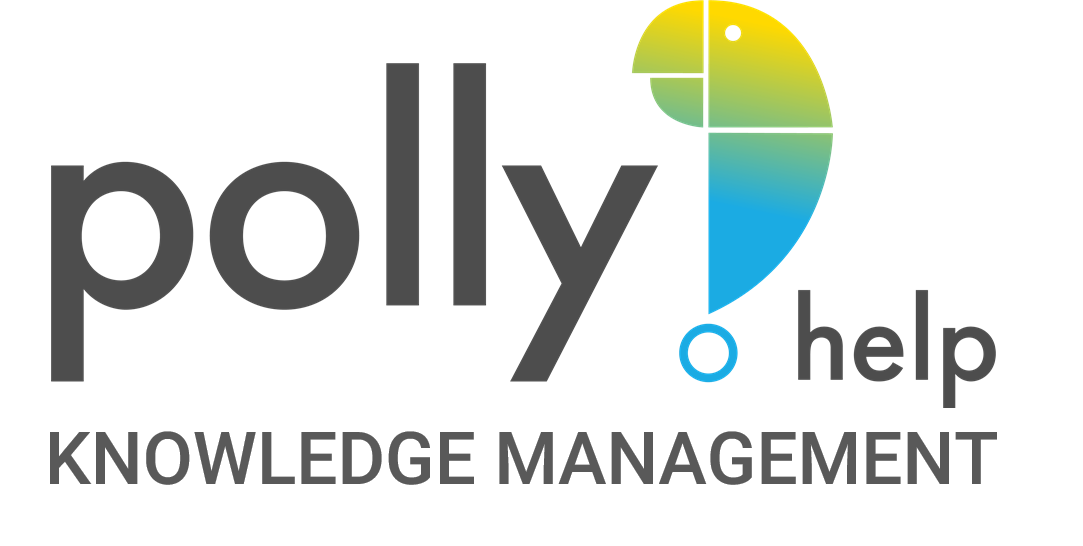The undisputed tech titan, Google, continues to blaze trails with its sophisticated knowledge management techniques, which are central to its remarkable streak of innovation. In a rapidly evolving digital landscape, Google’s innovation prowess is manifested not just in groundbreaking products but also in its masterful orchestration of information, skills, and technology. By nurturing a knowledge-rich environment, Google cements its status as a forward-thinking leader, dynamically shaping the future of business growth strategy and maintaining a decisive competitive edge.
At the intersection of multilayered knowledge assets and strategic implementation lies the heart of Google’s ability to disrupt and lead. Navigating through complex information ecosystems and fostering international standards like HTML5, the company exhibits unparalleled adeptness in combining human creativity with systematic precision. Such concerted efforts not only accelerate industry evolution but also ensure Google’s offerings are seamlessly interoperable within diverse digital infrastructures.
Key Takeaways
- Google leverages sophisticated knowledge management to fuel innovation and business agility.
- Interdisciplinary expertise is harnessed to enhance Google’s strategic innovation endeavors.
- Collaborative standards, such as HTML5, enable Google to maintain alignment with evolving industry needs.
- Integrating various forms of intellectual capital, Google secures long-term market leadership.
- The company’s culture of continuous learning underscores its commitment to ongoing innovation.
Understanding Google’s Approach to Knowledge Management
Delving into the mechanisms that empower Google’s success, one uncovers that the heart of its operation lies in a robust knowledge management approach. This framework goes beyond mere storage and retrieval of information; it involves a thoughtful curation of what can be termed Google’s knowledge ecosystems. Strategic innovation, a term often juxtaposed with the tech giant’s name, is not a mere buzzword but a tangible outcome of seamlessly integrating diverse knowledge sources with information technology standards that are setting the benchmark across industries.
The Pillars of Google’s Knowledge Management Architecture
When dissecting Google’s knowledge architecture, we find that it stands on three pillars: innovation, interdisciplinary synergy, and advanced technological application. Each pillar, in its own respect, contributes to an environment where transformative ideas thrive, propelled by insights drawn from various domains. These pillars don’t function in isolation; instead, they intertwine to form a lattice of strategic knowledge utilization, driving forward Google’s mission and business initiatives.
Integration of Diverse Knowledge Ecosystems
The blending of knowledge ecosystems is a signature of Google’s strategic orientation. Professionals from diverse backgrounds, ranging from business chemistry to international management, cross-pollinate ideas within this environment. It’s not purely about internal collaboration; the inclusion and partnership with external stakeholders, information technology standards, and industries broaden the potential for breakthroughs in solutions and product offerings. This collaborative framework is what sets Google apart in its relentless pursuit of innovation.
These ecosystems are not static; they are dynamic, ever-evolving entities that Google nurtures, understanding that knowledge architectures require a foundation in highly evolved information technology standards. It is this very approach that ensures that the organization does not merely react to change, but drives it, exemplifying strategic innovation at its core.
Empowering Innovation Through Collaborative Standards
At the heart of the tech industry’s rapid growth is the commitment to collaborative innovation, a principle that Google exemplifies in its approach to standard development. Google’s unwavering mission to create universally accessible products is underpinned by its advancement of compatibility standards, which ensure seamless experiences across the vast digital landscape. This approach is not merely a technical endeavor but a strategic effort that feeds into the broader industry evolution.
Critical to fostering this harmonious digital environment are the partnerships and joint efforts with other market stakeholders. Whether it’s through international consortia or cross-industry workgroups, Google takes on a pivotal role in forging the technical and procedural guidelines that make up today’s digital framework. By staying at the forefront of these developments, Google maneuvers itself into a position where it can direct the flow of technological progress while remaining adaptable to the collective needs.
The alignment of innovation strategies with industry standards is best illustrated by examining Google’s involvement with major web technologies:
- Google Chrome’s support for HTML5, catalyzing feature-rich web applications.
- Android’s adherence to Open Handset Alliance specifications, promoting smartphone software compatibility.
- Google’s contributions to the development of the Material Design system, which sets user interface guidelines for a cohesive user experience.
Through such contributions, Google doesn’t just follow trends — it sets them. By influencing the development process of new standards, the company positions its products to not only meet but shape consumer expectations.
Below is an overview of the key areas where Google’s pursuit of collaborative standards has a significant impact:
| Area of Impact | Collaborative Efforts | Industry Benefits |
|---|---|---|
| Web Browsing | Promotion of HTML5 | Consistent, cross-platform user experiences |
| Mobile Ecosystem | Android Open Source Project | Versatility and innovation in smartphone software |
| UI/UX Design | Material Design Guidelines | Streamlined design process and compatibility |
Through strategic foresight and dedication to shared progress, Google continues to enable a future where technology is not just an individual’s tool but a collective asset. As the tech field propels forward, it is the company’s adherence to collaborative standards that will indelibly mark its role in shaping the future.
Google Knowledge Management Strategy and Business Agility
In an era defined by rapid technological progress and competitive markets, Google’s approach to knowledge management stands as a testament to innovation and agility. Notably, the means by which Google adapts its business models to harvest the full potential of knowledge assets exemplifies a forward-thinking mentality primed for consistent growth and market responsiveness.
Adapting Business Models to Leverage Knowledge Assets
At the helm of business model innovation, Google demonstrates the significance of leveraging knowledge assets. The assimilation of new learnings into product design and strategic planning has allowed Google to outpace competitors and spearhead market trends. This ability to harness intellectual capital illustrates a pivotal shift from traditional business models to those that are agile, adaptable, and knowledge-centric.
Strategic Alliances and Knowledge Sharing
Google’s proficiency in forging strategic alliances and fostering knowledge sharing practices is crucial to its evolutionary business landscape. These alliances not only amplify Google’s reach but also lay groundwork for symbiotic relationships that fuel collective innovation. By opting for a cooperative rather than insular approach to knowledge management, Google taps into a wider pool of resources, insights, and opportunities, propelling its business agility to new heights.
The table below illustrates the interplay between Google’s business model innovation and its knowledge sharing efforts, ultimately revealing the dynamics of alliance strategies and the reciprocal benefits incurred:
| Business Model Component | Knowledge Sharing Practice | Strategic Alliance Benefit |
|---|---|---|
| Data-driven decision-making | Collaborative analytics platforms | Enhanced predictive insights |
| User-centric design | Open-source development | Accelerated product innovation |
| Customizable services | Global expertise networks | Broadened market adaptation |
| Revenue diversification | Cross-sector partnerships | Stabilized financial streams |
The alignment between these components ensures that Google’s ecosystem remains robust to the winds of change, facilitating an enduring capability to emerge as a leader in innovation through its expert handing of knowledge assets and strategic collaborations.
Aligning Standard Development with Google’s Innovation Goals
In the landscape of web technology, HTML5 innovation represents more than just an upgrade—it embodies a paradigm shift. Google, in its pursuit of cutting-edge innovation, has been a pivotal figure in the development and promotion of HTML5 standards. The intrinsic relationship between strategic standard development and the company’s broader innovation goals is essential to understanding the standardization impact and subsequent industry adoption that characterize Google’s market influence.
HTML5 Case Study: Scaling Innovation via Standardization
Google’s approach to scaling innovation through standardization is exemplified by its HTML5 case study. With HTML5, Google didn’t just contribute to a set of technical specifications; it led a movement towards a more interactive and seamless web experience. The implementation and advocacy of HTML5 innovation have streamlined content delivery, ensuring that users have a rich, adaptive experience across various devices—a core tenet of Google’s user-centric innovation philosophy.
From Standard Setting to Industry Adoption: A Strategic Perspective
To appreciate the strategic standard development that underlies Google’s success, one must delve into the company’s methodology. Google employs a multifaceted strategy, influencing both the conception and the industry adoption of new standards like HTML5. By engaging with a broad spectrum of stakeholders, from developers to the end-users, Google fosters an ecosystem where the adoption process is holistic and innovation-centric.
| Stage | Google’s Strategic Action | Impact on Innovation |
|---|---|---|
| Initiation | Advocacy for new web standards | Setting the foundation for next-gen technologies |
| Development | Contribution to the HTML5 specification | Direct influence on technical capability and potential |
| Promotion | Integration into Google products and services | Widespread usage and validation of standards |
| Adoption | Developer resources and community engagement | Acceleration of industry-wide incorporation and feedback loop |
This strategic integration of innovation goals with standard development not only advances Google’s own service offerings but also cultivates a more dynamic, accessible, and future-ready web for all. The interoperability that HTML5 fosters is a testament to Google’s commitment to a universally beneficial digital ecosystem.
Strategic Use of Intellectual Capital in Innovation Management
In the swiftly evolving landscape of the tech industry, Google stands as a paragon of success when it comes to leveraging intellectual capital to orchestrate winning innovation management strategies. By successfully valuing and incorporating intricate knowledge assets, the company has carved out a stellar competitive strategy that many seek to emulate.
Incorporating Human, Structural, and Relational Capital in Strategy
Google’s comprehensive approach to innovation management intertwines three critical forms of intellectual capital: human, structural, and relational. Each element is meticulously nurtured within the organizational strategy, enabling Google to not just react to market changes but actively shape the trajectory of industry innovation.
- Human Capital: Talent cultivation is at the core of Google’s ethos. The company invests in continuous learning and skills enhancement to maintain a workforce that is as dynamic as it is knowledgeable.
- Structural Capital: Google’s structural frameworks allow for the effective capture and utilization of knowledge, turning it into a tangible driver of strategy and product development.
- Relational Capital: By fostering robust relationships with stakeholders, partners, and the community, Google harnesses collaborative insights and co-creates value beyond its corporate walls.
Valuing Knowledge Assets for Long-term Competitive Advantage
The valuing of knowledge assets extends beyond conventional approaches at Google. With an eye on securing a long-term competitive advantage, Google’s strategy involves a careful synthesis of its pool of expertise and market relationships, ensuring that every asset is leveraged to its fullest potential.
Below is a comparative analysis of Google’s key knowledge assets and how they interconnect to reinforce its innovation management and competitive strategy:
| Knowledge Asset Type | Examples within Google | Contribution to Innovation Management |
|---|---|---|
| Human Capital | Software Engineers, AI Researchers | Driving technological breakthroughs and cultivating industry-leading software |
| Structural Capital | Search Algorithms, Data Centers | Fostering efficient operation and scaling of services |
| Relational Capital | Partnerships with universities and tech enterprises | Spurring collaborative R&D and engagement with cutting-edge science and technology |
It’s this strategic coordination of intellectual capital that sustains innovation and cements Google’s leadership positioning. By systematically developing each facet of its knowledge assets, Google continues to navigate through disruptive technology cycles with grace, remaining a vanguard of the industry.
Instituting a Culture of Continuous Learning and Development
A central tenet of Google’s enduring success is its unwavering commitment to instilling a continuous learning culture within its vast ecosystem. Far from being a peripheral concept, professional development is a critical enabler for knowledge-intensive innovation, helping to keep Google at the vanguard of technological progress. This cultural imperative ensures that every individual working at Google has the opportunity—and, indeed, the expectation—to evolve in their knowledge and skills constantly.
Google’s dedication to learning extends beyond traditional training programs. It permeates the fabric of the organization through various channels and initiatives that collectively empower their workforce to pioneer groundbreaking innovations regularly.
- Internal online platforms that offer courses ranging from machine learning to leadership development.
- Generous tuition reimbursement programs that encourage employees to pursue advanced degrees in their fields.
- 20% time policy, allowing employees to invest a portion of their workweek on side projects that may lead to new technologies or solutions.
Such initiatives clearly illustrate Google’s recognition of the potent nexus between continuous learning and business acumen—where fostering an environment of intellectual curiosity translates into tangible, industry-leading outputs. It’s a dynamic, self-perpetuating cycle where learning ignites innovation, and innovation, in turn, sparks further learning.
Moreover, by emphasizing the growth of each employee, Google not only fuels its reservoir of cutting-edge ideas but also inspires a sense of personal investment in the company’s overarching goals. It’s a win-win scenario; a nurtured workforce buoyed by up-to-date knowledge and a business incessantly energized by fresh perspectives and keen insights. It’s this symbiosis that makes Google an exemplar of how a culture of continuous learning can be leveraged for significant competitive advantage.
In essence, Google’s learning culture is not just an internal policy but a strategic imperative that serves as the foundation for a dynamic, transformative process that continues to shake the global market. Through fostering continuous personal and professional development, Google ensures that its dominance in the field of technological innovation and business strategy remains unchallenged.
The Role of Compatibility Standards in Service Evolution
In the current digital landscape, compatibility standards have emerged as pivotal elements that drive the continuous evolution of services and the overall user experience. Google has consistently demonstrated its commitment to these standards, ensuring that its plethora of services align with evolving technological trajectories.
How Google Navigates Technological Trajectories with Standards
Google’s ability to adapt and shape technological trajectories is largely influenced by its proactive involvement in the development and adoption of compatibility standards. These standards serve as a compass, guiding the company’s strategic direction and facilitating interoperability across a wide range of services and platforms.
The Impact of Network Effects on Google’s Standard Diffusion
Network effects have considerably bolstered Google’s efforts to propagate these compatibility standards. As a larger network of stakeholders adopts these standards, the collective benefit significantly increases, reinforcing the standard’s position in the market and enhancing service evolution.
| Standard | Description | Role in Service Evolution | Impact of Network Effects |
|---|---|---|---|
| HTML5 | Markup language for structuring and presenting content on the internet. | Facilitates rich multimedia experiences and cross-platform compatibility. | Widespread adoption has made it a fundamental component of web development. |
| OpenID Connect | Authentication layer on top of OAuth 2.0 protocol. | Streamlines user authentication across various Google services. | Enhances seamless integration with third-party services, boosting user convenience. |
| Material Design | Design language that creates a unified experience across platforms and devices. | Standardizes user interface elements for an intuitive user experience. | Adoption by developers leads to a consistent and familiar interface across apps. |
Investing in Knowledge Assets for Strategic Business Innovation
Google’s steadfast commitment to investing in knowledge assets is a testament to its strategic approach in the contemporary knowledge economy. This dedication does not just underscore a significant expenditure of resources but reflects a deeper, more intricate process of transforming these inputs into innovative outputs that spearhead market evolution. The essentiality of knowledge asset investment in catalyzing strategic business innovation is typified through Google’s dynamic transformation process, setting the stage for a culture that thrives on perpetual growth and learning.
From Knowledge Input to Output: A Dynamic Transformation Process
The journey from knowledge input to output undergoes a rigorous process that embodies Google’s philosophy of constant evolution and innovation. A multi-layered approach is adopted, where ideas and insights are not only generated but are also meticulously developed and refined to achieve maximum impact. It is through this dynamic transformation process that Google has continually managed to stay at the forefront of strategic business innovation, blending technology with insightful knowledge assets.
Capturing Synergistic Effects in Knowledge Economy
In harnessing and enhancing the inherent value of intellectual contributions, Google has mastered the art of capturing synergistic effects within the knowledge economy. These effects are emblematic of Google’s ability to merge disparate areas of knowledge to produce results greater than the sum of their parts. It is within this intertwining of collaboration and innovation that true strategic business ingenuity is realized, laying the foundations for groundbreaking advancements and sustainable development in a progressively interconnected economy.
| Knowledge Asset Type | Input Characteristics | Output Significance |
|---|---|---|
| Human Capital | Professional expertise and skills | Leadership in innovation and design thinking |
| Structural Capital | Corporate processes and databases | Enhanced efficiency and knowledge sharing |
| Relational Capital | Partnerships and customer relationships | Strategic alliances and market expansion |
Dynamic Intellectual Capital Transformation in Google’s Ecosystem
In the realm of technology and innovation, intellectual capital is the bedrock upon which companies like Google build their empires. The dynamic transformation of intellectual capital—comprising knowledge, expertise, and creativity—within Google’s ecosystem is a testament to the company’s pioneering vision and its unwavering commitment to excellence. It is this agility in harnessing intellectual capital that ensures Google not only stays ahead in the tech race but also continuously pushes the boundaries of what is possible.
At Google, intellectual capital is not just preserved; it undergoes a process of evolution, where collaborative thinking and diverse expertise catalyze the development of cutting-edge products and services. Intertwining advanced technologies with innovative thought processes, Google architects an ecosystem where ideas are not simply generated but are transformed into tangible solutions that shape the future of technology and society.
- Creation and nurturing of robust knowledge networks
- Cultivation of a workplace culture that breathes innovation
- Strategic collaborations that spark cross-industry breakthroughs
- Continual investment in research and development
These mechanisms are not just strategies but are the lifeblood of Google’s operational philosophy. They drive the company’s ability to extract unrealized potential from its knowledge assets and actualize them in the form of products, services, and methodologies that lead the market.
The transformative journey of Google’s intellectual capital is one that encapsulates its unrelenting pursuit of progress, and it remains a beacon for other organizations aiming to revolutionize their own practices and offerings.
Conclusion
Throughout this exploration of Google’s knowledge management strategy, we’ve uncovered the intricate mechanisms that bolster its status as a beacon of innovation and business growth. By interweaving diverse knowledge ecosystems with its business strategies, Google not only sustains its competitive advantage but also shapes the technological standards that drive the industry forward. The company’s astute incorporation of collaborative standards such as HTML5 into its core innovation process exemplifies a model of strategic foresight and industry evolution.
Google’s business agility is a testament to the transformative power of integrating human, structural, and relational capital into its innovation management. Through continuous learning cultures and heavy investment in knowledge assets, Google underscores the immense value of intellectual capital. This dynamic approach ensures that knowledge transformation processes align closely with strategic business objectives, thereby capturing synergistic effects in the knowledge economy.
In wrapping up, Google’s orchestrated approach towards fostering a knowledge-intensive environment and leveraging intellectual capital reflects a deep-rooted commitment to maintaining its pole position in an ever-evolving market space. As this discussion encapsulates, by harnessing the potential of knowledge management techniques and the principles of collaborative innovation, businesses can indeed unlock new dimensions of strategic innovation and sustainable competitive edge.
FAQ
What is Google’s knowledge management strategy and how does it foster innovation?
Google’s knowledge management strategy integrates human, structural, and relational capital to create an environment conducive to innovation. It ensures a competitive edge by leveraging diverse knowledge ecosystems, adopting compatible technology standards, and fostering collaborative innovation. This strategic approach enables Google to continuously transform business models and drive business growth.
How do Google’s knowledge management techniques contribute to strategic innovation?
Google’s knowledge management techniques contribute to strategic innovation by orchestrating diverse ecosystems that bring together interdisciplinary expertise, encouraging collaborative standards like HTML5, and aligning innovation goals with industry specifications. This creates synergy among different stakeholders and drives continuous improvement in their products and services.
Can you explain the pillars of Google’s knowledge management architecture?
The pillars of Google’s knowledge management architecture include integrating human expertise with advanced technology systems, fostering collaborative environments for sharing and generating ideas, and aligning business models with evolving market demands and technological standards. This foundation supports Google’s capacity for pioneering solutions and maintaining a leading position in the tech industry.
What role do collaborative standards play in industry evolution?
Collaborative standards are critical for industry evolution because they set the groundwork for interoperability, ensuring that different systems and organizations can work together effectively. By supporting the development and adoption of these standards, like HTML5 in the case of the web industry, companies can foster widespread innovation and ease the integration of new technologies across the ecosystem.
How does adapting business models to leverage knowledge assets enhance business agility?
By adapting business models to leverage knowledge assets, companies like Google can rapidly respond to changing industry landscapes and customer demands. This involves optimizing knowledge assets to develop and refine products, services, and operational strategies, which in turn boosts business agility and fosters continued growth and adaptation.
What are the benefits of forming strategic alliances and engaging in knowledge sharing practices?
Strategic alliances and knowledge sharing practices enable companies to pool resources, access diverse knowledge bases, and enter new markets. This collaborative approach can accelerate innovation, reduce risks associated with research and development, and create more robust and effective solutions by combining expertise from different entities.
How does Google align standard development with its innovation goals?
Google aligns standard development with its innovation goals by actively leading standard-setting processes and promoting the adoption of these standards within the tech industry. By doing so, Google can shape the trajectory of technology development in a way that supports its own innovation objectives and facilitates industry-wide advancements.
Why is the strategic use of intellectual capital important for innovation management?
The strategic use of intellectual capital is essential for innovation management as it encompasses the knowledge, experience, and relationships that form the foundation for creating new and improved offerings. By valuing and cultivating intellectual capital, companies can continuously generate novel ideas, enhance their processes, and maintain a long-term competitive advantage.
How does a culture of continuous learning and development contribute to Google’s success?
A culture of continuous learning and development is key to Google’s success as it ensures employees are consistently enhancing their knowledge and skills. This commitment to professional development supports Google’s ability to generate knowledge-intensive innovation, adapt to market changes, and maintain its status as an industry leader.
What is the significance of compatibility standards in Google’s service evolution?
Compatibility standards are crucial in Google’s service evolution as they provide common guidelines for various technologies and platforms, making it easier for Google to develop services that work across different devices and ecosystems. Adhering to these standards ensures Google’s offerings remain accessible and functional within the technological trajectories of the industry.
How do network effects impact Google’s diffusion of standards?
Network effects significantly impact Google’s diffusion of standards by increasing the value of a service or technology as more people use it. As Google promotes and adopts certain standards, the growing network of users and developers adopting these standards further accelerates their diffusion, creating a positive feedback loop that benefits all stakeholders involved.
In what way does Google invest in knowledge assets, and how does it affect strategic business innovation?
Google invests in knowledge assets by recruiting top talent, supporting research and development, and fostering an environment of intellectual curiosity and collaboration. This investment maximizes strategic business innovation by enabling Google to continuously create and implement breakthrough ideas that lead to advanced products and services, thus sustaining their competitive advantage in the knowledge economy.
What is the dynamic transformation process from knowledge input to output at Google?
The dynamic transformation process at Google involves converting various forms of knowledge inputs like data, insights, and employee expertise into impactful knowledge outputs like new technologies, services, and improved business processes. This process leverages strategic innovation and robust frameworks to create synergistic effects, driving the company’s growth and leadership in the industry.
How does capturing synergistic effects in the knowledge economy benefit companies like Google?
Capturing synergistic effects in the knowledge economy allows companies like Google to amplify the impact of their innovations. By combining different knowledge assets and collaborating across sectors, Google can harness the collective strength of these interactions to create more powerful and effective solutions, driving both industry progress and their own strategic business innovation.





